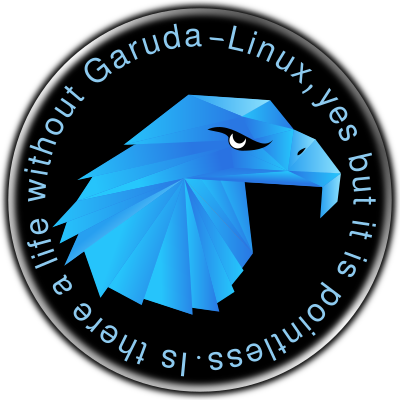Mostly i use:
ArchLabs bspwm, wich i have been using for a few years as a daily driver.
Also have a computer with endeavour bspwm and another with popos.
Mostly i use:
ArchLabs bspwm, wich i have been using for a few years as a daily driver.
Also have a computer with endeavour bspwm and another with popos.
Hmm that’s a tough call to make. It depends on your hardware and choice of desktop environment. But as long as there are no major updates of certain packages, you should be fine to update EndeavourOS between 3-4 weeks.
It’s difficult to say, because it really depends on what happens in the world. In most cases, monthly updates to a machine (with the occasional exceptions for major security issues) should be fine. However, it’s a calculated risk. The time you spend between each update is time when your system is potentially vulnerable. (source)
The other thing to consider is given your future lifestyle/work life, you’ll need to ask yourself what best fits your needs. Do you need peace of mind? Do you enjoy to troubleshoot? Do you need things just to work? You’ve got some time before next year to think about it. Perhaps dual booting between say PopOS and EndeavourOS, or just using the latest Debian build before you leave. It’s really all up to you, there’s no right or wrong answer here, the only thing I would ask yourself is what gives you the most peace of mind.
Personally if it was me, I would stick with EndeavourOS and update every 3-4 weeks if/when/until something breaks and then fix it or if I can’t fix it, then I’d re-evaluate my needs. Arch is great, I’ve only been using it since this year so I am by no means an Arch expert, but that is the route that I would most likely take if I was in your position.
I believe you don’t need to. Just update whenever possible.
If not, you will be only running on a minor older version, or even a major older version. Not a big issue as some distros update only every six months.
If you are worried about security I believe even a 2 years old release (just without any updates) will be safe enough.
AFAIK, it won’t break because there is an update, it won’t even know there is an update so it will not “want” to break ![]()
I second your opinion.
But my experience with Linux for long time it doesn’t break on its own unless you “break” it by “tweaking” or “configuring” something (as I have been doing the first 7 days on EOS).
Just clicking an app to use it will never harm it. Even if it crashed, you still can restart/reboot with no damage,
Has Garuda Linux been mentioned yet? ![]()
Quickly posted before it closes here. ![]()

Garuda … ![]()
There is something to be said for stability. 8 years ago I tried Arch and was constantly working around bugs, so much so that I didnt do much else.
So far EOS has been stable enough, but I am only starting my second week. What else would I run?
This is a very positive statement which needs a reality check from my point of view.
My PC resp. AMD GPU still suffers from an xorg bug which I reported 6 month ago. Ignoring xorg updates since then. It is recognized as a bug by the developers and scheduled to be fixed with the next release. Fingers crossed. So much to your point that Linux does not break on its own.
Another example? btrfs regressions in new kernels. Happened in the past and will eventually happen again.
There are many more examples where fundamental parts of the system break without the user breaking it.
I hate to break it to you, but if you are running EndeavourOS, you are running Arch ![]()
So your feeling of EndeavourOS being more stable (whatever that means) than Arch is just bias… ![]()
Also, Manjaro stable is arguably not more stable than Arch in the sense of having fewer bugs. Instead the name “stable” refers to it being less frequently updated (stability in package versions). From my experience (and that of many others), there are more bugs on Manjaro stable than on Arch.
Well, the choice to use an alternative, young, fairly experimental filesystem together with the latest mainline kernel does place the responsibility at least partially on the user. All such regressions can easily be avoided by either using the LTS kernel or the ext4 filesystem (or, even better, both).
Kernel regressions that break ext4 are beyond rare, and it is very unlikely such a kernel would get into the official Arch repos.
So, I would generally agree with the notion that updates on Arch very rarely, if ever break stuff, and that the responsibility for almost all cases of systems breaking can ultimately be placed on the user, either by the direct user error (which is quite common), or indirectly, by making choices which increase the chances of breaking.
Of course, there are exceptions, but they are exactly that: exceptionally rare.
If I wasn’t using endeavour I would either use garuda but their “barebones kde” edition, or arch proper. If arch didn’t exist at all it would be fedora. If arch and fedora were gone then maybe pop_os I guess.
On Majaro there are three repositories, Unstable (direct import from Arch), Testing (Packages that have been moved from Unstable after a bit with no major bugs), and Stable (Packages moved from Testing after more time without bugs found).
In theory that should weed out the major bugs, and Manjaro stable does a pretty good job of that. But minor annoying bugs still remain. Its a reason I am trying EOS. Hopefully its as stable as Manjaro stable. If not it didnt cost me anything to try.
I really love Linux Mint Cinnamon, but I won’t back to an LTS distro, It felt like old good days (?), keeping on Windows 7 with same software over years. I’d go rather for a rolling release, surely based on Arch, like Xero Linux or I’d learn to instal vanilla Arch.
Anyway, long live to EndeavourOS!

Yep, that’s really a nice theory
For my little experiencie, EOS is much more stable and the only issues I had, were while trying EOS on Virtualbox because I’ve installed a bunch of software, included Pamac. On my second try, I’ve installed only what I need and always using pacman or yay.
The jump from Virtualbox to real installation was so easy and I didn’t have big issues after a month using this great distro. Yeah, maybe is not much time, but it’s still running as fast and stable as the first day.
Maybe in “theory” but not in reality. I would argue that distros that use actual arch repos have fewer bugs than manjaro does.
Well, in principle I agree with you, however, it is not always that simple. This problem is certainly not due to my own doing:
![]()
I think it is, because I don’t have that problem…
nope, that came after an update and restart